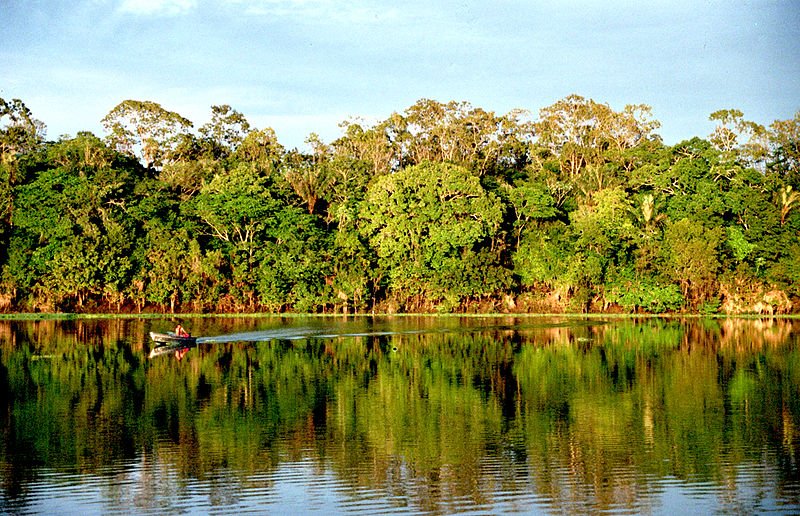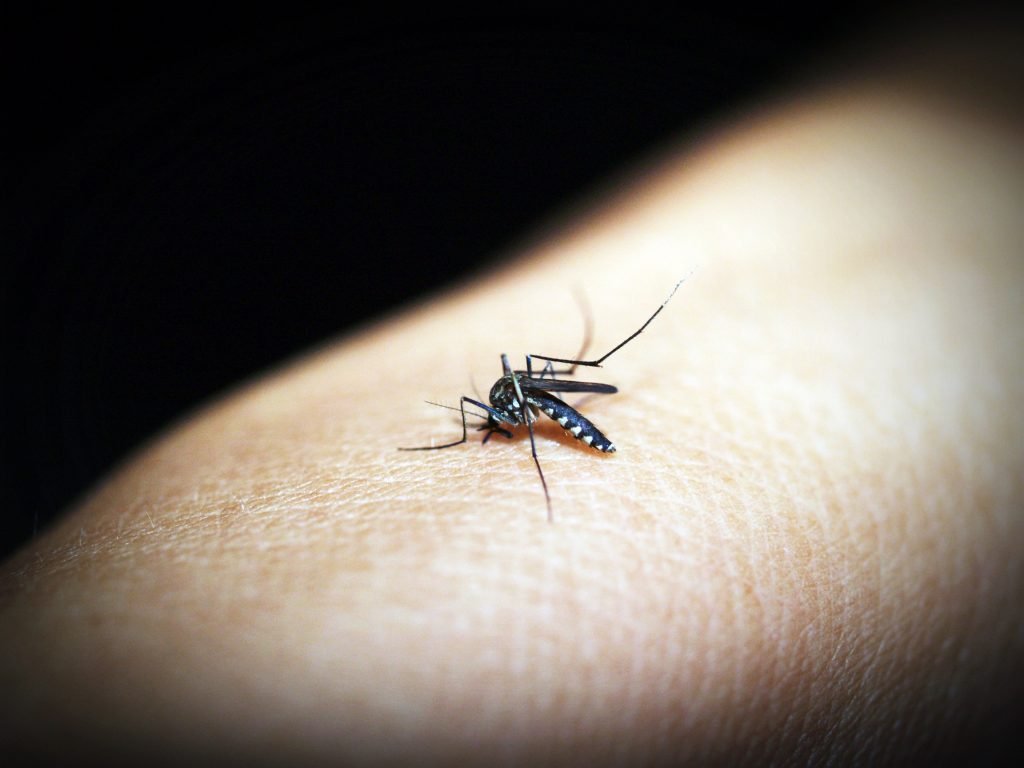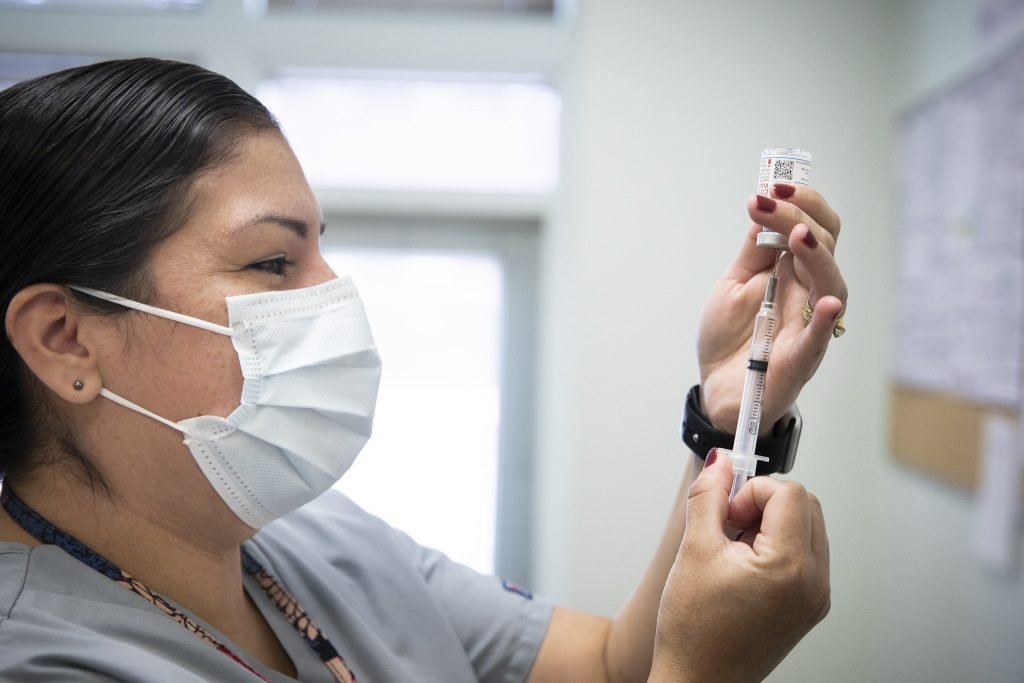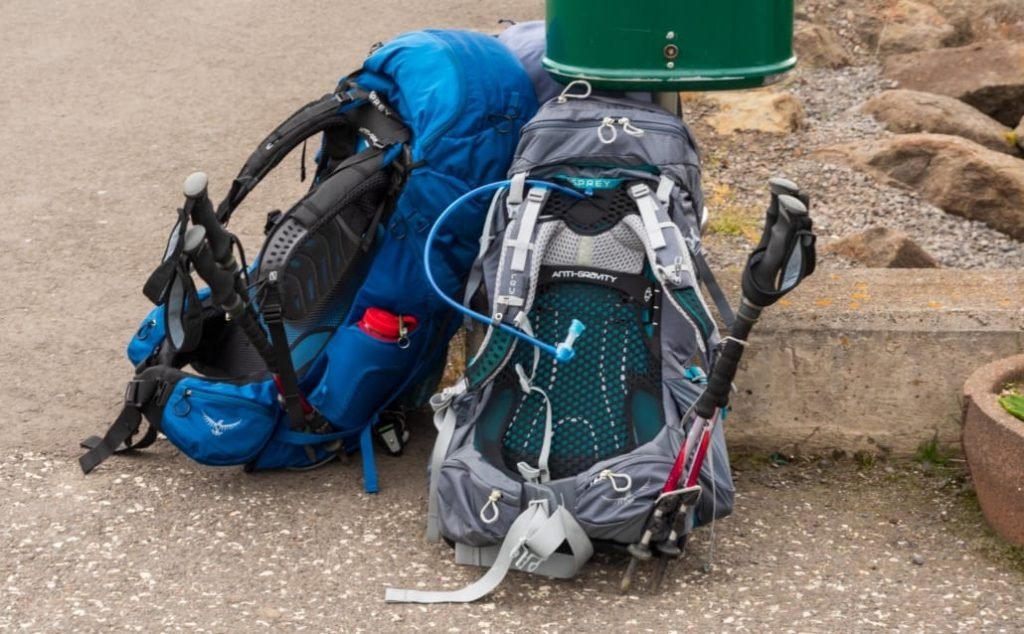The Amazon is home to incredible sights and experiences- from stunning wildlife and indigenous communities to breathtaking landscapes and impressive waterfalls. However, while it is a dream of many to travel to this natural paradise, it is also one of the most challenging and treacherous locations on the planet, so you must know what you’re getting into before traveling alone in the Amazon.
It is not advisable by experts that anyone travel the Brazilian Amazon without being accompanied by an official guide. However, if you find yourself alone in this region, ensure you’ve packed ample supplies, planned a safe route, and acquired a PLB beforehand. You’ll also need to be trained on several survival techniques.
Traveling anywhere alone isn’t for the faint of heart, least of which in the Brazilian Amazon. That is why we’ve created this complete guide that will discuss everything from preparing your body and mind for such an adventure to what gear is recommended, as well as some safety tips on exploring one of nature’s most diverse environments.
Is It Recommended to Travel the Brazilian Amazon Alone?
First, we need to discuss how wise or advisable it is for anyone to travel the Brazilian Amazon alone. This is one of the world’s most ambitious and demanding regions to survive in, and if you’re ill-prepared, you won’t. So, for your safety and Brazilian resources, let’s discuss how feasible this feat is.
It is not recommended by most travel, nature, and survival experts for people to travel in the Brazilian Amazon completely alone. However, if your definition of “alone” is without friends or family as companions, you don’t mind the company of strangers. Therefore, traveling the Brazilian Amazon “alone” is safe if you are accompanied by an official and specialized guide.

Although the Brazilian Amazon is a natural spectacle, it isn’t something most would advise you to experience alone. The ultimate motive here is the traveler’s safety.
Realistically, anyone could travel the Brazilian Amazon alone, and traveling the region doesn’t always entail the backpacking most would assume. It isn’t uncommon for travelers to go on a day hike to a particular natural attraction or spend the evening on the famous Amazon River. Still, most of these are hosted through tours led by informed guides or organized companies.
So, we’ll reiterate that it isn’t wise that you could travel the Amazon alone. That being said, we’re going to conduct the rest of this article as if your definition of “alone” is without people you know or, in the grand scheme of “what ifs,” you somehow were separated from your tour guide or group and needed to see how you would theoretically get through the Amazon without them (again, hopefully not by choice).
Risks of Traveling Alone in the Brazilian Amazon
Before we discuss how you could potentially travel this region on your own, what you should know, and what you should have, we’d like to drive home the point of why it is so unsafe and inadvisable for anyone to walk into the Brazilian Amazon by themselves.
Here are just some of the many risks and threats you’ll most likely encounter while in the Amazon, which could be life-threatening without the proper knowledge, skills, and resources.
Unsavory Groups
There are severe risks when traveling the Amazon, and one of the most unsettling is its infamous reputation for housing:
- Drug trafficking gangs
- Robbers
- Illegal mining companies
- Unwelcoming indigenous peoples
Without an official guide, it is too easy for the average traveler to wander off course and into an unsafe location where these groups reside.
In 2017, Brazilian police retrieved the body of Emma Kelty, a British kayaker who had been shot and murdered by robbers hiding on a remote stretch of the Solimões. While such occurrences are rare, they are something to consider when planning your route around the rainforest.
Many indigenous tribes in the Amazon rainforest have been there for thousands of years. While some accept visitors into their villages freely, typically through organized tours, many have minimal contact with outsiders. Understandably, they are wary, unnerved, or even threatened by unknown travelers wandering into their land without permission. It’s best not to put yourself in one of these precarious situations where you’re unsure how they will perceive your presence.
Wildlife
Human risks aside, there is a myriad of natural factors to consider when visiting the Amazon, such as the wildlife that lives there and the threats they could pose to your well-being. The Amazon is home to some of the most poisonous, venomous, and fearsome species on Earth, and it isn’t unlikely you’ll encounter many of them while exploring.
If you sense that something is watching you, odds are, there is. It isn’t uncommon for jaguars to stalk, attack, or even kill humans. However, these big cats are the least of your worries most of the time.
In the air, thousands of mosquitos fly about that could quickly spread diseases like malaria, yellow fever, and dengue, which can have terrible effects on your health and even lead to death if untreated.

When you aren’t swatting away these pests from your face and body, you should be paying exceptionally close attention to where you place your hands and feet. Several species of snakes and spiders, bullet ants, and poison dart frogs also reside here and have no qualms with attacking a human when threatened. Most will only attack when necessary and out of self-defense, but one bite from these creatures could be venomous enough to kill, cause severe pain, or troublesome infections.
If you thought all this could be avoided by staying out of the jungle and jumping into the water, think again. The Brazilian Amazon is full of piranhas, black caimans, the Amazon River Bull Shark, and anacondas, all of which are proficient hunters that could pose a serious threat to your safety if encountered.
This is why an informed guide is so essential because they will have the crucial knowledge necessary to identify and avoid these animals or how travelers can observe them safely.
Navigation
The absolute risk of the Brazilian Amazon is arguably why most experts recommend travelers only enter with a guide or tour group.
This region is notorious for being extremely difficult to navigate, thanks to its incredibly dense foliage and diverse environment. The jungle is filled with so many plant species that grow in thick brushes that it is difficult to see more than a few feet into the distance. As a result, most Amazon travelers either have to stick to a previously cleared and maintained trail or bring some machete to remove obstructing foliage.
The diverse environment poses its challenge considering the number of rivers, swamps, mud pits, and even mountain ranges you might have to move around unexpectedly, creating a new path from the one you laid out when you first entered.
If you don’t have exceptional navigation tools and skills, you could quickly become disoriented and lost in the vast jungle, especially if you don’t have landmarks to help reorient you.
Advantages of Traveling Alone
Although we don’t advise you to travel the Brazilian Amazon alone, traveling alone, in general, has a series of benefits, rendering it an experience many travelers recommend people do at least once in their lives.
One of the most significant advantages of traveling alone is its freedom. For once, you don’t have to consider anyone but yourself, and that’s perfectly fine. You don’t need to tailor the trip to what someone else wants or worry about them in your calculations of where you’ll go, when you take breaks, what you do, etc.
Additionally, traveling alone allows you to have your own opinions on what you’re experiencing without the input of others. It’s a fantastic way to get more in touch with yourself and realize the things you genuinely enjoy, what you don’t, and how everything makes you feel.
The final benefit of traveling alone that we’ll touch on is that this is always a challenge and frequently pushes people out of their comfort zones. When you travel alone, everything is on you. This can be daunting for people, especially those who don’t frequently make big decisions themselves and prefer to go with the flow of others.
Now, they have to make every decision themselves, and if something goes wrong, they have to use their wits to figure out how to resolve or overcome the obstacle. These are fantastic for building self-confidence and pride in one’s ability to problem-solve and be self-sufficient.
What You Should Know
While there are a series of genuine threats in the Amazon, traveling this region isn’t all doom and gloom. On the contrary, it is a spectacular and unmatched environment, and traveling the area alone can heighten the experience in a way you never imagined. However, when you intend to do so in the world’s largest forest, you must be physically and mentally prepared.
This is why we are going to list some of the most important things we think you should know before traversing the Brazilian Amazon, such as realizing your place on the food chain concerning Amazonian wildlife, being fully vaccinated against dangerous diseases, knowing which season you’re traveling in, and more.
Covering these topics will help you be better informed and prepared upon arrival to have a safe and fulfilling trip in the Brazilian Amazon.
You’re the Visitor Here
Our previous section on risks relating to wildlife might have made you feel as if the Amazon is just filled with horrors, and they’re all out to get you. But, in reality, the Amazon is filled with natural specimens at their finest, and you’re merely visiting them in their natural habitat.
Some species had lived in this region for millions of years, well before you decided to lace up your hiking boots and waltz into the trees snapping pictures on occasion. Therefore, the best way to be conscious of wildlife threats while still enjoying them is to realize that you are the visitor here, and therefore, the natural world around you deserves your respect. If you decide to ignore this, Amazon might give you a rude awakening.
Ultimately, 80% of the world’s terrestrial plant and animal species can be found in this vast forest, and while they’re each amazing in their own right, they’re best left safely observed rather than physically disturbed. Refrain from petting or concerning as many animals as possible and learn the signs that your presence is causing them stress or even escalating to territorial behavior.
This is the best way to ensure all inhabitants and visitors are safe. Trust us, there are endless stories of dumb tourists’ actions in this region, and some have ended very poorly. You don’t want to add your account to theirs.
Vaccinations Can Be Lifesaving
Regardless of your stance on vaccinations, it is highly recommended that tourists and visitors receive a series of these lifesaving injections due to the rampant diseases many obtain when traveling the Amazon region.
It is highly recommended, though rarely required, that individuals visiting the Amazon receive vaccinations for:
- Malaria
- Yellow fever
- Meningitis
- Hepatitis
- Rabies
- Dengue
These are the most common diseases you’ll be exposed to in this region. Unfortunately, some can be fatal, especially if you’re traversing the rainforest far from a medical facility for an extended period and don’t have medications for the diseases on hand.

Most diseases are caused by mosquito or other insect bites, but there is always the potential that you obtain some when in nearby towns. It isn’t uncommon for visitors to also have diarrhea, food poisoning, and dehydration through consuming contaminated local food and water.
For this reason, you’ll want to bring stomach-related medications along and be highly conscious of where you obtain your food and water. Drinking only bottled water is advised and choosing eateries with proper food handling and cleaning practices is essential.
Are You Visiting During Wet or Dry Season?
All regions on the Earth go through their seasonal changes, and the Amazon is no different. However, if you’re used to living somewhere that goes through the classic rotations of spring to summer to fall to winter, you’ll be a bit confused in the Amazon.
Here, there are only two seasons: the wet season and the dry season. Either season will affect everything from your attire to the route you travel to the belongings you pack and more.
The wet season is when the Amazon receives most of its rainfall, amassing about 60%, so while you should plan for rain during these months, it doesn’t mean you’re rain-free during the dry seasons.
It is also generally cooler during the wet season, with an average temperature of about 86°F (30°C) versus the dry season’s 98°F (37°C). Since you’re visiting the Brazilian Amazon, the wet season will occur from mid-December to mid-May, and average temperatures year-round range from 85 – 95°F (29 – 35°C) during the day and about 10 degrees cooler at night.
This Isn’t the Place for Entomophobes
While there are large cats like jaguars and other sizeable animals in the Amazon (that you should be aware of), the creatures you’ll see most frequently are the smallest ones.
Scientists estimate about 2.5 million species of insects in the Amazon rainforest. You’ll see a decent number of them crawling around the forest floor, hitching a ride on your clothes, or flying around your face. So, entomophobes, be warned.
Most of these insects are harmless and can be fantastic spectacles to behold in their natural environment, or they can be a great source of nutrition when your food supply is low. However, others can be poisonous or come with highly painful and irritating bites, so you’ll want to be vaguely familiar with the insects you’ll most likely see in the Brazilian Amazon, both for your safety and benefit.
But, if creepy crawlies aren’t your thing, you might want to avoid wandering the Amazon because these critters are everywhere and unavoidable day and night. Your best plan of how to deal with them is to get used to them.
Study Local Foliage
If you’re going to backpack or spend more than a day in the Brazilian Amazon, we strongly encourage you to speak with a local guide or specialist and learn about the foliage you’ll find in this region.
There are plants in the Amazon, and a great deal of them can be lifesaving when you’re low on food, while others could cause serious harm when consumed or touched. Therefore, learning which plants are safe to eat beyond doubt can be handy when traveling here.
To acquire this skill, it’s best to travel the region briefly and learn from a specialist firsthand rather than relying on a book you bought beforehand or the internet. You’d be surprised how many plants look alike, one being a safe option and the other less so.
When in doubt, there are a significant number of citrus fruits, vegetables, coconuts, and nuts like cashew or peanut you can eat throughout your travels. Each is a fantastic source of calories and even protein that can allow you to save your food rations for another day or help you keep your strength up when you’ve unexpectedly run out.
Things You Need When Traveling the Brazilian Amazon
Having vast knowledge about the Brazilian Amazon is invaluable if you’re traveling the region alone. But, having the right tools and items on hand can’t hurt either. Most of these are essential when traversing the Amazon to aid in navigation, and protection from insects, animals, or the elements and will undoubtedly increase your comfort while making painstaking tasks a breeze.
Before you head into the Brazilian Amazon, we strongly recommend you have:
- A plan
- Hiking books
- Sun Protection
- Flashlights
- A walking stick
- A compass
- Pants and long-sleeved shirts
- A PLB device
We’ve chosen most of the objects assuming that you’re traveling the Amazon over a few days. Still, many should accompany you even if you’re popping into the rainforest for a few hours to see a particular attraction or hotspot.
That being said, here are a few tips about each item regarding tips you should know for packing and acquiring them and why they’re helpful in the Brazilian Amazon.
A Plan
While this isn’t a physical item, it goes without saying that you should never travel into the Amazon rainforest without a well-laid-out plan. This should include where you intend to go, how you’re going to get there, how long it should take, and other essential details.
By planning your route, you reduce the odds of struggling to navigate the region, and you’ll be able to make a more informed decision regarding what you should pack, wear, etc.
Having a plan makes the journey easier on you and allows you to tell others where you intend to be, the route you’ll travel, and when they should expect your return. This is a vital element of traveling alone because it is a form of security so others can find you more quickly if you get lost, or something unfortunate happens.
Hiking Boots
The Brazilian Amazon’s terrain can be difficult to trek without the proper footwear, so we strongly recommend having a quality pair of comfortable hiking shoes tied to your feet before you step into the rainforest.
You will most likely walk significant distances, but the ground will undoubtedly be muddy, slippery, and uneven. Wearing essential sneakers or sandals will only increase your chances of injury and significantly impede your pace.
You’ll want waterproof boots to keep your feet dry in this extremely wet region, and many experts recommend wearing knee-high rubber boots for increased protection.
Sun Protection
If you think the mass amount of foliage in the Brazilian Amazon will shield you entirely from the sun, think again. Sunburn is still a real risk here, so you’ll need a decent high SPF sunblock. In addition, because the region is extremely wet and moist, you should also be prepared to reapply this protection multiple times throughout the day. A wide-brimmed is also an excellent choice for additional sun protection and can even help keep some insects out of your face.
Flashlights
A flashlight is a must in your backpack, even if you don’t intend to travel the region at night. But, even if you have it for emergency purposes, you’ll feel much better having a flashlight on hand if you timed your trip wrong and the sun is starting to decline.

Not only will you want the flashlight to improve visibility and navigation in the dark, but it can also help ward off curious or dangerous animals. Another reason why they’re the best choice is that Amazonian trees are highly flammable. Therefore, you don’t want to risk causing a large-scale forest fire by lighting a torch when you could use a battery-operated flashlight instead.
A Walking Stick
Never underestimate the power of a good walking stick. These simple but versatile tools can do wonders for you in the Brazilian Amazon. Most people use these sticks for additional support when walking or climbing challenging terrain. However, where the walking stick comes in handy is being your guinea pig.
Experts know that if there is a log or other obstructions ahead of them, the last thing they want to do is hurtle their leg over it. This is because snakes and other predators might lash out at your leg. After all, it is in their territory, or worse, you’ve accidentally stepped on it. The walking stick will allow you to test these questionable obstacles or perform other tasks without using your hands and risking your well-being.
A Compass
Compasses are essential but vital tools everyone should have when traveling in nature. However, considering how difficult it is to navigate Amazon, this tool is all the more important here. So our advice is to learn how to use it before you try navigating the rainforest alone correctly. And if you’re wondering if the compass app on your phone counts, the answer is no, it does not.
Pants and Long-Sleeved Shirts
Dress for success. In terms of the Amazon, that means pants and long-sleeved shirts. This is for a multitude of reasons. First, having the majority of your body covered helps protect you from insect bites and the sun, so you’re at lower risk of diseases and sunburn.
Secondly, temperatures in the Amazon will fluctuate, so having light clothes that cover most of your body will help keep you cool at 80+ degrees Fahrenheit but warm enough at 70 degrees Fahrenheit or below.
We recommend buying fast-drying clothing since this region is often wet and humid and ensuring the dress isn’t skin-tight. Considering the moisture levels and how much you’ll undoubtedly sweat, you want it to be breathable. It also wouldn’t hurt to have spare socks and other articles of clothing if you have the space and can bear the weight.
A PLB Device
By this point, we hope we’ve driven it into your mind that you should genuinely never travel the Brazilian Amazon completely alone. However, whether you take this advice or not, we can’t stress enough how vital this last tool is to your travels.
A Personal Locator Beacon is an emergency device that will send a distress signal with your GPS location to the nearest authorities for immediate search and rescue upon activation. The device is battery-operated and uses satellites to send alerts, so they work worldwide.
You must have one of these devices on hand for emergencies if you or someone else is injured or lost or your safety is threatened.
Final Thoughts
And there you have it; everything you need to know about traveling the Brazilian Amazon alone. Apart from all the information covered above, all you need to do now is a plan where you want to go and what kind of trip you want to have when exploring this spectacular region.
Remember that your safety should always come first, and while the Amazon is amazing beyond belief, no sight or experience is worth your life. So, have a registered PLB on hand, get vaccinated, buy the proper attire, and last but not least, find a legitimate guide. After that, you can enjoy the rainforest entirely at ease.
While you’re here, I think we might interest you with these:
Visiting The Amazon While In Brazil? Here’s What You Need To Know – Whether you’re traveling alone or not, you’ll definitely need some pointers if you’re planning on going to the Amazon. Luckily for you, we have all the deets right here!
Traveling to Brazil? Here Are the Vaccines You Will Need – Vaccine talk is on the hype, so we decided to give you a quick but informative guide on which vaccines you’ll need to travel to Brazil!
The Magnificent Birds Of Brazil And Where You Can Find Them – If you’re a birdwatching enthusiast, exploring Brazil’s vast green might grant you unforgettable moments! To help you out, we put together this list of birds you’ll be able to spot; check it out!
Cover photo:

